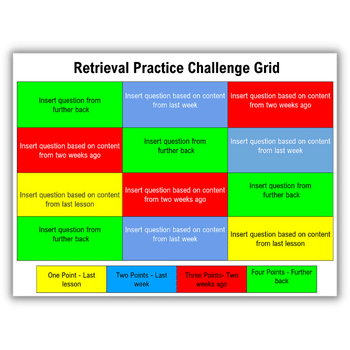Help MFL Students to GCSE 9-1 Success by Teaching One Chunk at a Time

Memory matters; and teaching and testing transferable ‘packages’ of content can help every candidate impress in those final exams, says Jake Hunton…

- by Jake Hunton

In the early stages of teaching Year 10 the new GCSE MFL specifications, I found myself pining for something for which I had made a promise never to pine… controlled assessment. There you go. I said it. It was only once, and I immediately regretted it afterwards.
The nature of how controlled assessment content had to be crammed and regurgitated was not the reason for this momentary lapse in unfortunate and ill-advised nostalgia.
It was more that I had been having some difficulty in reconciling the amount of content on the new GCSE course with meeting the demands of supporting the students to be successful in their linear exams – which could target any of the topics covered across the course, and demand three tenses and a coherent structure.
There was a time when I feverishly judged my success with a class by content coverage, proudly exclaiming that we had finished the textbook by the end of March of Year 11, so that meant we had a good few weeks left before the exams to revise. Back then, I wasn’t aware of how important memory was.
The ace up my sleeve, I felt, was the many PowerPoint slides I created, which mirrored the exact rubric and question style of the specimen assessment paper and past writing papers.
Producing as many ‘authentic’ practice tasks as possible – even right down to the same style bullet point and dotted lines on which students would write – seemed eminently sensible to me; a Jose Mourinho or Pep Guardiola-like style of obsessive attention to detail, indeed, if I may be so bold.
The problem was that when each one of these practice tasks was used, like controlled assessment itself to an extent, it was testing students while their retrieval strength was still relatively high, ignoring the fact that much of this ‘learned’ language would evaporate soon after.
Stuff that works
I wasn’t aware of retrieval strength and storage strength then; yet even though I am now conscious of the need to teach with memory in mind, this hasn’t been enough to solve all of the problems with preparation for the new style GCSEs.
Certainly, the following strategies have been very useful:
- regular drilling of ‘he/she + present tense verb’ for preparation for the photo card on both Foundation Writing Question 1 and the first question on the Speaking Photo Card (AQA)
- a ‘Goldilocks’ approach to practice at developing answers for the Photo Card so that students didn’t write too much yet not too little
- revisiting the early days of producing practice tasks which mirror the exam-style
- ‘live’ marking whereby students complete a practice task in exam conditions and I mark
- adopting strategies in the style of MFL subject leader Darren Graham, using ABCDE (A being the subject, B the verb, C the time phrase, D the info and E the tense), or the excellent ‘CUDDLES’ mnemonic developed by Jess Lund at Michaela.
And of course the networking across the army of like-minded and supportive professionals who make up the wonderful #MFLTwitterati. But there is still a missing piece of the jigsaw.
Economical recall
In a customarily belting blogpost entitled Patterns First – Why You Should “Ditch” Word Lists, Traditional Grammar Rules and … Your Textbook, Gianfranco Conti writes about the constraints of working memory and how by learning chunks made up of more than one word we can be more economical in what we learn:
‘Working Memory can only accommodate 4 items at any given time for only a handful of seconds. By learning 4 chunks made up of 4 words each instead of 4 single words, the brain is still processing 4 items but working with 16 words at the same time’
I liken this to element interactivity and Cognitive Load Theory (CLT). CLT has been around for some time yet is only now, it seems, starting to infiltrate schools; as is retrieval practice.
Retrieval practice, CLT and so on… clearly, none of this stuff can ever be labelled as a panacea, nor as a replacement for second language acquisition research.
However, it can certainly help towards preparation towards the GCSE writing and speaking exams.
If element interactivity can be defined by the different number of knowledge elements which have to be coordinated in memory in order to accomplish a task, then learning a chunk and attempting to treat this as a separate item might then help to transfer it to the writing and speaking exams at the end of the year more efficiently than expecting some sort of spontaneous coordination in working memory of all the different knowledge elements taught to come together and set the exam paper alight.
Flexible phrases
Consider the number of different knowledge elements which would have to be coordinated in working memory, and therefore the relatively high element interactivity, to produce this phrase: ‘Le chat s’est assis sur le paillasson.’
Learners would have to consider the use of the reflexive verb and its ‘être’ conjugation, the recall of ‘le chat’ and ‘le paillasson’ and so on.
Or how about the following phrase: ‘qu’on vient de construire’? (certainly more likely to be used than telling your French/German/Spanish friend that your cat sat on the mat).
Teaching and testing this phrase as a chunk no matter what the topic, so that it has been retrieved 20-30 times at least and taught to be applied in context across the 2-3 years at GCSE, might just go some way to making it a meaningful enough chunk to impress.
So how do we choose a chunk? How would we separate the good ones from the bad? Well, a suitable starting point, as referred to already, might just be to identify those which can be taught and tested, and then applied to a number of topics.
For example, the ‘qu’on vient de construire’ chunk might sit nicely across a range of topics from AQA’s Theme 1: Identity and culture Topic 3, which includes Free-time activities (Music, Cinema and TV, Food and eating out and Sport).
Students could say they went to the cinema, restaurant, leisure centre etc. that has just been built. Or, for Theme 2 and Topic 4: Travel and Tourism, stayed at a hotel which has just been built.
Teaching of the chunks could easily include discussion of the slight adaptations which could take place; swapping ‘construire’ with ‘rénover’ could work; and which chunks can complement each other: ‘Je me suis bien amusé’ being a useful example.
A lot of this comes down to striking a balance between how much testing, how much teaching explicitly of tenses, how much teaching of chunks, and how much curriculum coverage has to be managed.
However, teaching and testing meaningful and multi-topic use chunks across the course seems a far more sensible approach than being hoodwinked by the fuzzy sense of fluency-inducing cognitive ease through topic-by-topic testing.
 Jake Hunton (@jakehuntonMFL) is head of modern foreign languages at a large secondary school in Solihull, and author of Fun Learning Activities for MFL and the forthcoming book, Exam Literacy, which discusses study strategies referred to in the 2013 Dunlosky study (both published by Crown House).
Jake Hunton (@jakehuntonMFL) is head of modern foreign languages at a large secondary school in Solihull, and author of Fun Learning Activities for MFL and the forthcoming book, Exam Literacy, which discusses study strategies referred to in the 2013 Dunlosky study (both published by Crown House).










